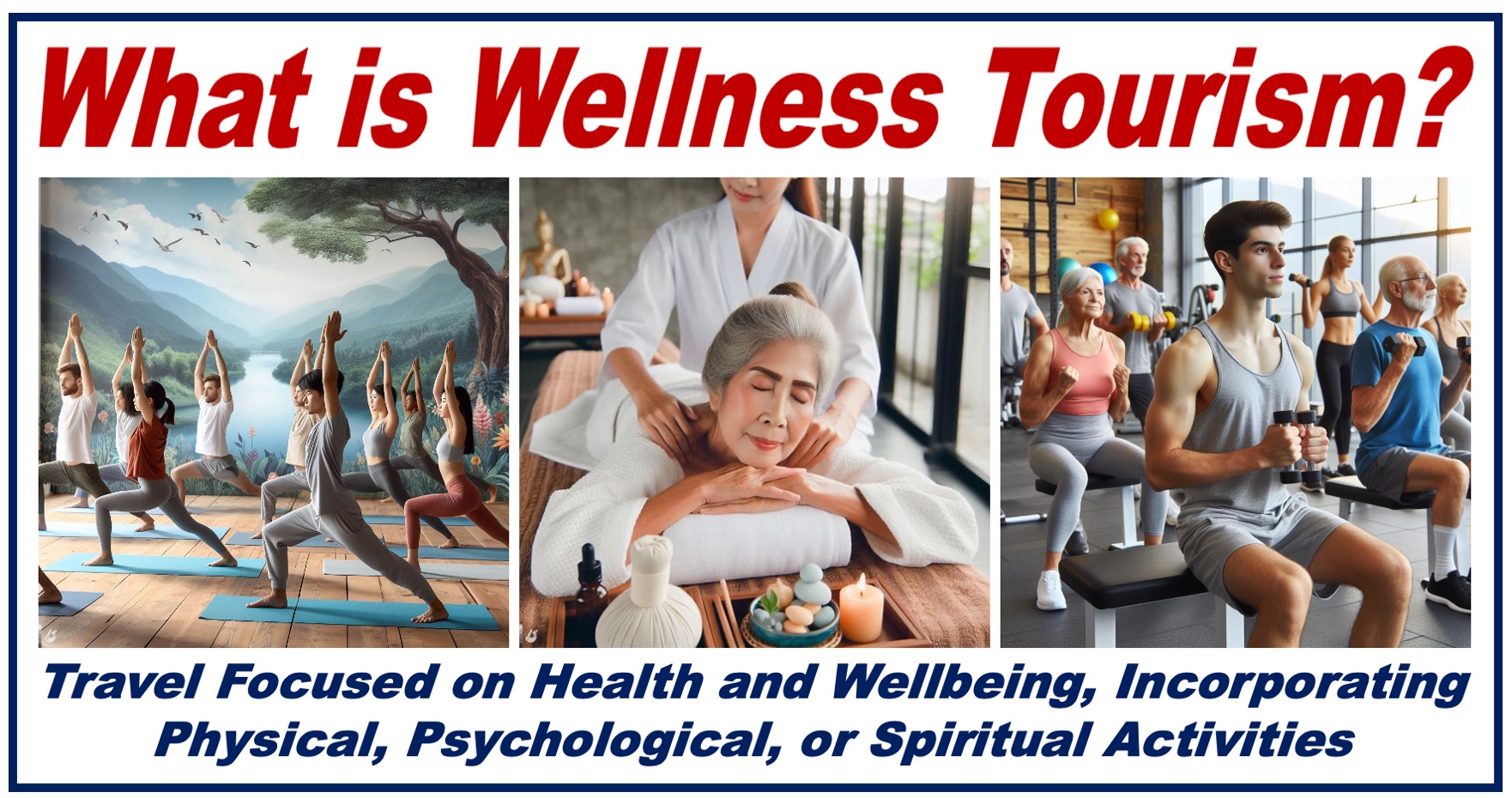Wellness Tourism refers to traveling for health and wellbeing reasons.
The wellness tourism economy includes all expenditures that tourists make during a trip to improve or maintain their wellbeing.
Spelling: Both ‘wellbeing’ and ‘well-being’ are correct. When writing an article, select one spelling and stick to it, do not change from one to the other within that article.
“Wellness tourism is voluntary travel to worldwide destinations for the purpose of promoting health and wellbeing through physical, psychological, or spiritual activities”
Two types of wellness travelers
There are two main types of wellness travelers:
-
Primary wellness travelers
These travelers are primarily motivated by wellness to take a trip. Their destination is chosen specifically for its wellness offerings. An example of this type of tourist might be someone who books a retreat at a spa resort renowned for its holistic health programs, such as yoga, meditation, and nutritional workshops.
-
Secondary wellness travelers
These individuals aim to maintain wellness or engage in wellness activities during any kind of travel. An example would be someone who ensures their hotel has a fitness center and uses it regularly during their business trips or a traveler who chooses accommodations based on the availability of healthy menu options.
Wellness tourism vs. medical tourism
These two types of tourisms are quite different.
Wellness tourists travel to improve or maintain their health and quality of life, whereas medical tourists travel to receive treatment for a diagnosed condition.
Wellness tourism trips include a variety of activities such as thermal springs, day spa and hotel spa, thalassotherapy, exercise. Medical tourism trips include a range of healthcare services, such as elective procedures, complex specialized surgeries, dental care, cosmetic surgeries, orthopedic surgery, and fertility treatments.

Wellness tourism activities by category
Health (integrative health centers, CAM centers, and wellness centers)
- Check-ups
- Integrative medicine
- Diagnostics
- Healthy eating
- Sleep therapy
- Stress management programs
- Preventative health screenings
Nutrition (organic restaurants, health food stores)
- Weight management
- Detox programs
- Culinary experiences
- Farm-to-table dining
- Nutritional workshops
- Juice bars
Fitness (gyms and fitness centers)
- Gym visits
- Fitness classes
- Stretching sessions
- Pilates
- Personal training
- High-intensity interval training (HIIT)
- Aquatic exercises
Eco and Adventure (parks, wildlife sanctuaries, and nature preserves)
- Hiking
- Biking
- Nature walks
- Wildlife observation
- Kayaking or canoeing
- Rock climbing
- Outdoor meditation
Personal growth (lifestyle retreats and wellness retreats)
- Retreats
- Life coaching
- Stress reduction techniques
- Reading and writing workshops
- Art therapy
- Meditation and mindfulness programs
- Educational seminars
Spiritual and Connection (yoga retreats, spiritual retreats, and ashrams)
- Prayer sessions
- Volunteering opportunities
- Quality time with friends and family
- Solitude and reflection
- Chanting and singing
- Spiritual workshops
- Community service
Mind-body (yoga studios and martial arts studios)
- Yoga
- Tai chi
- Qigong
- Biofeedback
- Meditation
- Martial arts
- Breathwork classes
Spa and Beauty (health-focused hotels, wellness cruises, health resorts, spas, salons, bathhouses, and springs)
- Massage therapies
- Aromatherapy baths
- Body treatments
- Facials
- Hair and nail care
- Thermal and mineral springs
- Hydrotherapy

Wellness tourism – a growing industry
The wellness tourism industry has experienced rapid growth due to a global surge in interest in fitness, health, wellbeing, and increased consumer disposable income.
Leading players in the hospitality sector are capitalizing on this trend by catering to health-conscious consumers. They are incorporating fitness facilities into their hotels and offering amenities like in-room yoga mats.
However, it’s not just hotels that are adapting to the needs of wellness tourists. Airports around the world are also entering the market, providing travelers with meditation rooms, massage chairs, indoor green spaces, organic dining options, and walking tracks.
Video – What is Wellness Tourism?
This educational video, from our sister channel on YouTube – Marketing Business Network, explains what a ‘Wellness Tourism’ is using simple and easy-to-understand language and examples.
